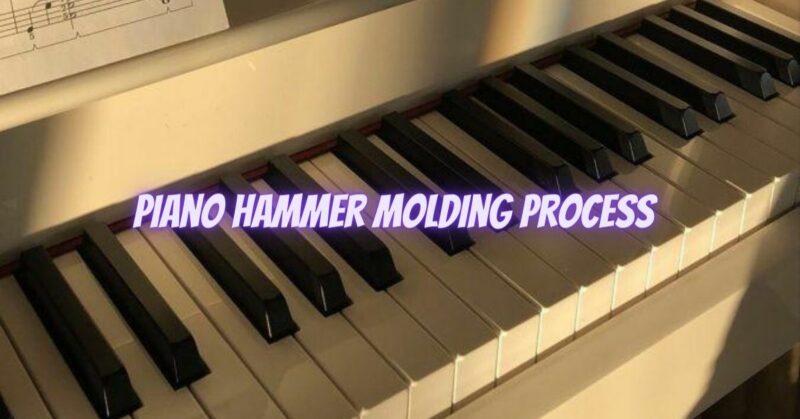The piano hammer is a crucial component responsible for producing the rich and diverse range of tones that emanate from this magnificent instrument. Crafting these hammers is a meticulous process that combines artistry, science, and skilled craftsmanship to achieve the desired tonal characteristics. In this article, we’ll explore the piano hammer molding process, highlighting the key steps involved in creating these essential components.
Step 1: Material Selection The first step in the piano hammer molding process is selecting the appropriate materials. The core of the hammer is typically made from hardwood, such as beech or maple, chosen for its durability and resonance. The outer felt layer is made from high-quality wool, carefully chosen for its texture, density, and consistency. The combination of these materials contributes to the hammer’s ability to produce a rich and vibrant sound.
Step 2: Hammer Core Preparation The hammer core is shaped from the selected hardwood using specialized machinery and handcrafting techniques. Skilled artisans carefully shape the core to achieve the desired weight and size. The shape and weight of the hammer core directly influence the piano’s touch and tonal response.
Step 3: Felting Process The felting process involves applying layers of high-quality wool to the hammer’s core. The felt is carefully stretched and molded over the core to ensure a smooth and uniform surface. The density and thickness of the felt layers play a crucial role in determining the hammer’s responsiveness and tonal characteristics.
Step 4: Needling and Voicing After the initial felting process, the hammers undergo voicing, a specialized technique that involves needling the felt to adjust its density and hardness. Needling is performed to shape the hammers and achieve specific tonal qualities. By strategically needling the felt, piano technicians can modify the hammers’ responsiveness and dynamic range, allowing for a wide palette of tonal colors.
Step 5: Lacquering Once the voicing process is complete, the hammers may undergo lacquering, where a thin layer of lacquer is applied to the felt surface. Lacquering helps to protect the felt from wear and enhances its durability. Additionally, it can provide a smoother surface for better contact with the strings, contributing to improved sound projection.
Step 6: Hammer Conditioning After the hammers are molded, felted, and voiced, they undergo a conditioning process. This involves careful playing-in of the hammers on a special machine or through manual playing to further refine their tonal qualities. Conditioning helps the hammers achieve their optimal sound and responsiveness before they are installed in the piano action.
Step 7: Quality Control Throughout the piano hammer molding process, rigorous quality control measures are in place to ensure consistency and excellence. Each hammer is inspected for weight, balance, shape, and tonal response. Skilled craftsmen meticulously check each hammer to meet strict quality standards before they are approved for use in a piano.
Conclusion The piano hammer molding process is a meticulous and intricate journey that breathes life into the heart of the piano’s sound. The delicate interplay of material selection, shaping, felting, voicing, and conditioning all contribute to the unique tonal character of each piano. Skilled artisans and piano technicians draw upon their expertise and passion to craft hammers that enable pianists to convey their musical expression and emotions through this timeless instrument. As a result, the piano’s sound becomes a conduit for artistic interpretation and creativity, enriching the lives of both performers and listeners alike.


